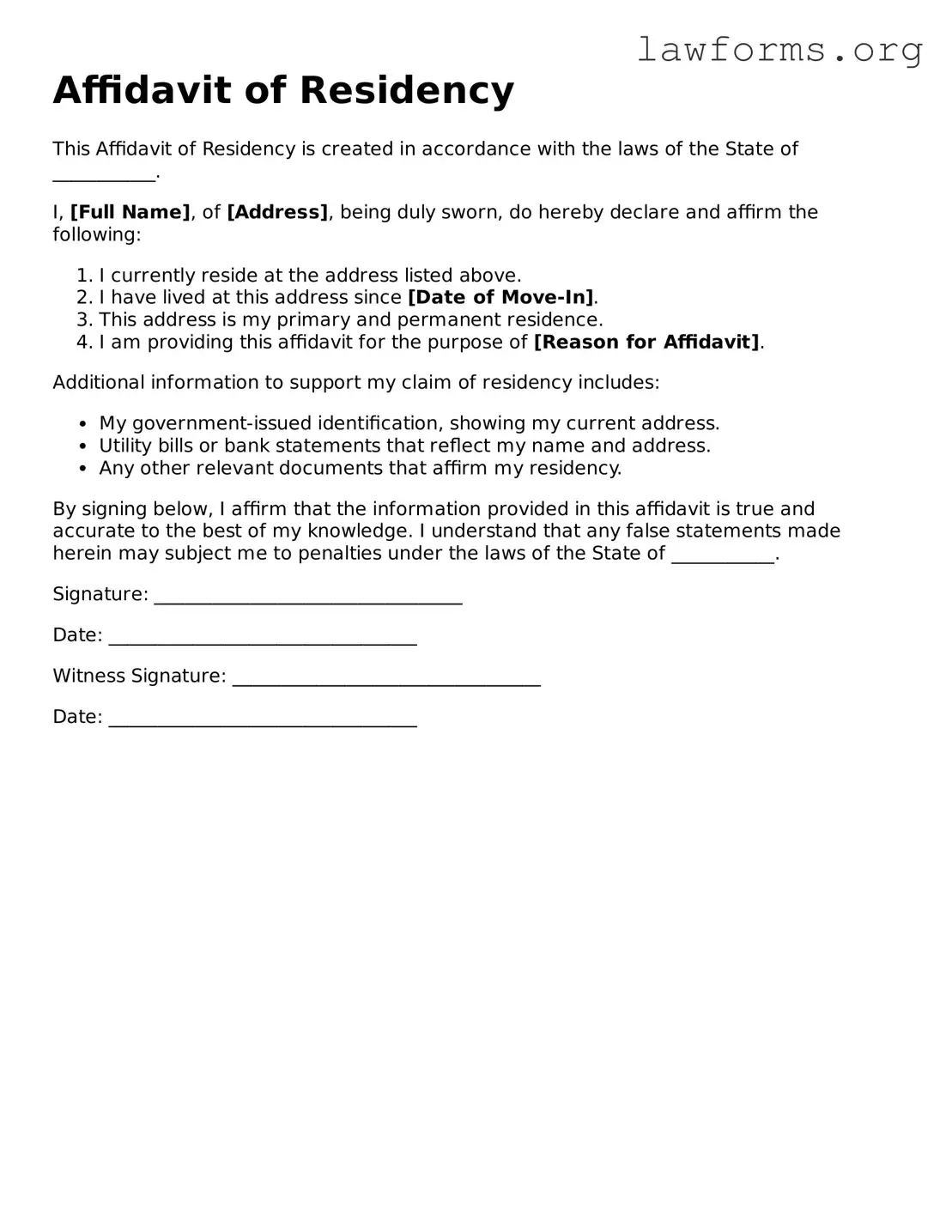Affidavit of Residency
This Affidavit of Residency is created in accordance with the laws of the State of ___________.
I, [Full Name], of [Address], being duly sworn, do hereby declare and affirm the following:
- I currently reside at the address listed above.
- I have lived at this address since [Date of Move-In].
- This address is my primary and permanent residence.
- I am providing this affidavit for the purpose of [Reason for Affidavit].
Additional information to support my claim of residency includes:
- My government-issued identification, showing my current address.
- Utility bills or bank statements that reflect my name and address.
- Any other relevant documents that affirm my residency.
By signing below, I affirm that the information provided in this affidavit is true and accurate to the best of my knowledge. I understand that any false statements made herein may subject me to penalties under the laws of the State of ___________.
Signature: _________________________________
Date: _________________________________
Witness Signature: _________________________________
Date: _________________________________
